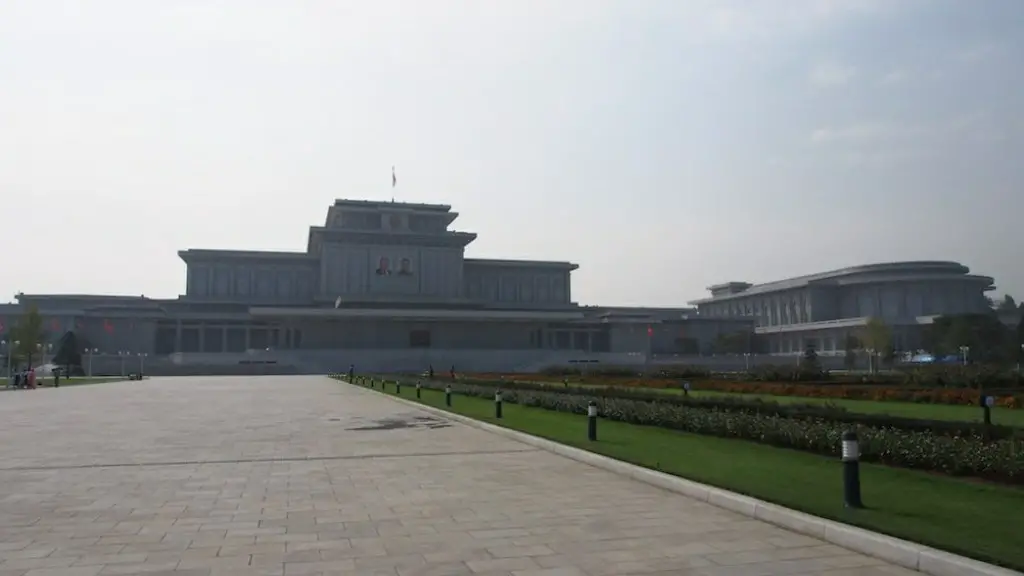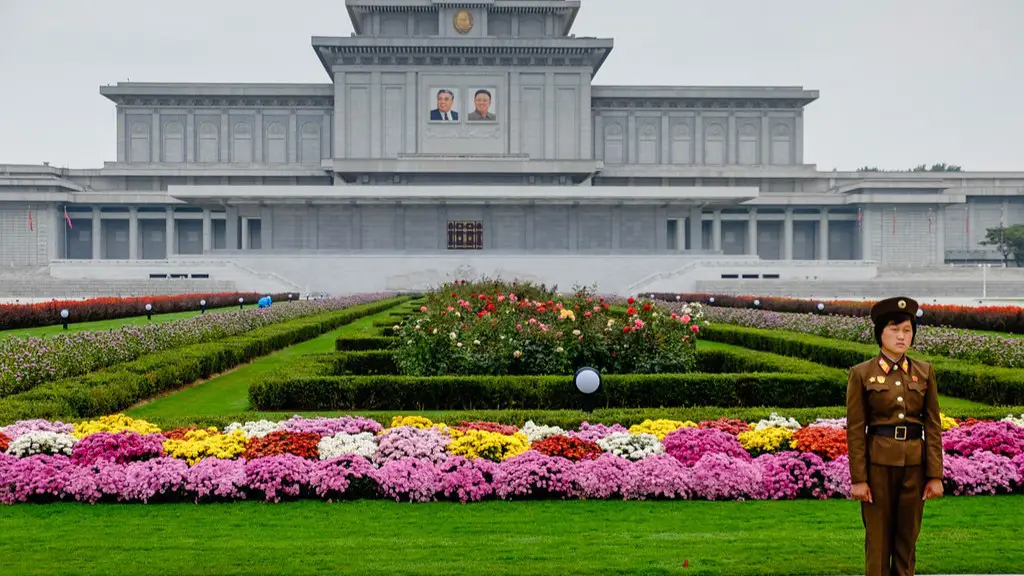Pre-split History of Korea
Korea has been a unified nation since 668 AD. It had experienced unified periods and periods of occupation up until it was liberated from Japan in 1945. The end of World War II changed many things, including the fate of Korea. After Japan’s surrender, it was agreed that Korea would become a free and independent nation, though it did not happen immediately. In 1945, the U.S. and the Soviet Union divided the peninsula at the 38th parallel. The two zones were divided by the 38th parallel. The U.S. occupied the south, which became South Korea; and the Soviet Union occupied the north, which became North Korea.
The Soviet Union backed North Korea’s communist regime and supplied the resources for its early industrialization. The United States supported South Korea’s capitalists and provided extensive economic aid. Initially, North Korea and South Korea were meant to be one united country again. However, due to differences in ideology, this became impossible. North Korea, with their “juche” ideology, clashed with South Korea’s democratic ideal.
The Korean War
The Korean War was an armed conflict between the two Korean states. It lasted from 1950 to 1953 and highlighted the cleft between North Korea and South Korea. The cause of the Korean War was the failure to unify or establish a unified government. Both North and South Korea organized their respective governments during the war, and it became increasingly clear the two states would remain separate.
The war started when North Korea crossed the 38th parallel with intense force in June 1950. It was soon revealed that they had support from the regime of Mao Zedong in China. It took three years of intense fighting until an armistice was signed between the two sides in July 1953. The armistice drew a line at the 38th parallel separating the two countries. This line was accepted by North and South Korea, as well as China and the United Nations.
Post War & Demarcation
In the aftermath of the Korean War, both sides were more distant than before. North Korea continued to be led by its communist party, the Workers’ Party of North Korea.The North developed the juche ideology that emphasized economic self-sufficiency and economic collectivism. They also took steps to create a cult of personality around Kim Il-sung.
South Korea became a democratic state, with Syngman Rhee as president, and developed a free market economy. South Korea’s GNP expanded rapidly and they developed friendly and close relations with many western countries. South Korea desperately attempted to reunite the two nations, but all attempts failed. Despite numerous negotiations and talks, a reunified Korea is still a distant dream.
South Korea and North Korea demarcated their boundaries in July 1972, marking the first official borders between the two states. This demarcation line, referred to as the Military Demarcation Line (MDL) is approximately 248 miles long. The line has been reinforced by landmines and other fortifications, and today serves as a stark reminder of the two Koreas’ division.
Additionally, both countries have chosen to adopt different military strategies. For example, North Korea has traditionally had a larger and better equipped army, while South Korea has chosen to rely on the support of US forces and professionalized and highly trained soldier.
Political Conflict
Political conflict between South Korea and North Korea escalated in the late 20th century. North Korea continued to resist western values, and South Korea defiantly clung to their democratic government and growing economic success. North Korea also focused on their nuclear program and the development of missile technologies.
The relationship between North Korea and South Korea suffered heavily after the death of North Korean leader, Kim Jong-il in 2011. His son, Kim Jong-un launched several nuclear weapons tests, which caused alarm and apprehension throughout the region. This, combined with an oppressive style of governance, led to a further deterioration of relations between the two states.
Still in 2020, the tension between North Korea and South Korea remains strong, due to the many unresolved issues between them. South Korea still calls for reunification and reunification talks, while North Korea maintains a stance of distrust and enmity regarding South Korea.
Impact of the Split
The political split has led to several economic and social impacts in South Korea and North Korea. In South Korea, the economy saw an unprecedented growth and the country became one of the most developed nations in the world. South Korea also built a solid democratic system, with free and fair elections, free speech, and other liberties.
In North Korea, the economy has stagnated and people lack many of the basic necessities. The regime has closed of its economy from the rest of the world, and the country runs under an oppressive system. North Koreans are denied their political and economic freedoms, but still remain determined to make their country a better place.
The division also created a major culture gap between North and South Korea. South Korea adopted western ideals, while North Korea adopted a repressive regime. The two sides still remain divided by their ideologies, and it is unlikely that a reunification will be achieved in the near future.
Effect of Finances on Separation
While the division between North Korea and South Korea is primarily political, it has also had a significant impact on the economies of both countries. South Korea experienced rapid economic growth, due to its access to capital and expertise from the United States and other western countries. The Republic of Korea has also signed free trade agreements with many other countries and become a major technology and manufacturing hub.
Meanwhile, North Korea is heavily reliant on foreign aid to keep its economy afloat. The regime has been able to sustain its economy by utilizing sanctions and tapping into black markets and other illicit activities. Unfortunately, this has caused North Korea to become increasingly isolated from the global economy.
Negotiations for Reunification
Efforts to reunite North and South Korea have been ongoing since the Armistice Agreement in 1953. Numerous negotiations, such as the Six-Party Talks and the Inter-Korean Summits have failed, due to the two sides inability to agree upon an unified government. To date, the two countries remain divided and tensions still remain.
Still, there has been some progress. In 2018, North and South Korea made a joint announcement of their commitment to work towards peace and reunification. Leaders of both sides have agreed to further discuss key issues such as the removal of land-mines along the border and economic cooperation.
The greatest obstacle towards reunification is the ideological split between the two Koreas. For any agreement to be made between them, the two sides must be able to come up with an ideology that is shared by both sides. This is no easy task, as both states have strong support for their respective ideologies and any changes could be viewed as a betrayal.
Role of the International Community
The international community has been cautiously optimistic about the reunification of North and South Korea. However, many countries have taken a cautious approach and have focused more on diplomatic talks, rather than military confrontation.
The United Nations has encouraged both North and South Korea to continue the work for reunification. The United Nations encourages steps such as economic integration which could lead to peaceful reunification in the future.
The United States has also been vocal about its support for reunification. The United States has sent envoys and representatives to discuss the possibility of a diplomatic solution. However, the United States has not fully committed to the reunification process, as it must take into consideration the interests of the other countries in the region, such as China, Japan and Russia.
Recently, the United States and South Korea came to an agreement to deploy a US missile defense system in South Korea. This is seen as a step in the right direction to ensure peace and stability in the region, though some North Korean officials have criticized it as another form of aggression towards North Korea.
Conclusion
The division of North Korea and South Korea has had a tremendous impact on both countries. While reunification is still a distant dream, it is still possible if the two sides can come to a compromise. The international community has offered immense support and diplomatic solutions, though it remains to be seen if these solutions are enough to bridge the gap between the two Koreas. The reunification of North and South Korea is an issue that needs to be solved not just by the countries involved, but by the whole world.


